Creating an architecture, engineering or construction programme or any other technical programme can feel like a daunting task. If someone creates one for you, then you need to review it before using it. There are a number of quick steps that you use to check that the programme is fit for purpose in a forensic analysis setting. This checklist is applicable when programming in Asta Powerproject or MS Project.
1. Calendar
Depending on what type of project you are scheduling, you need to determine what project calendar is required. Is the project on a 5-day, 5.5-day, 6-day, or 7-day week? Or is the project running on a 24-hour or night-shift project calendar? A contract programme may use a different calendar to a construction/delivery/target programme. Check that you have included all of the public holidays (PH), rostered days-off (RDO), and shutdown days (SDs). The exact dates of the RDOs are not known until at the end of the calendar year. However, you can account for them by including them as exceptions in the later years. This ensures that you account for the non-working days.
Choose your project calendar:

2. Project Dates: Start, Delivery, Finish
You have to determine when the project is going to start or finish, depending on your client’s requirement. Asta Powerproject has an option for delivery date, which can be your contractually obligated date. You can plan your project to finish before the delivery date.

3. Project Tasks & Work Breakdown Structure (WBS)
Enter all of the tasks and then sort them into the WBS using the summary tasks. Did you include the full scope of works based on the drawings? Is the job broken down into separable portions? Are the separable portions valid work breakdowns?
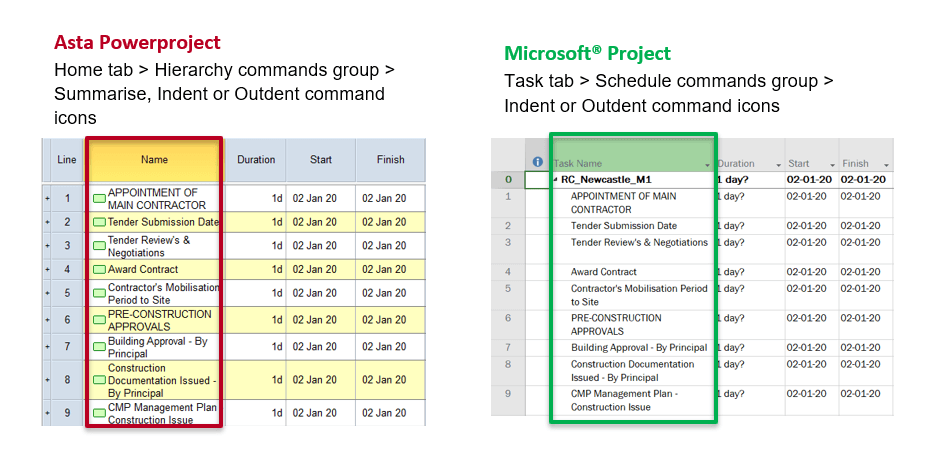
4. Durations
If you draw your tasks on the Gantt Charts, the durations are entered. If you are entering via the Spreadsheets then you enter the durations into the Spreadsheet except for the summary tasks. Are the assumptions for the duration valid? Are there any changes in the duration of the various tasks? Do you need to adjust the duration of the tasks because of negative float?
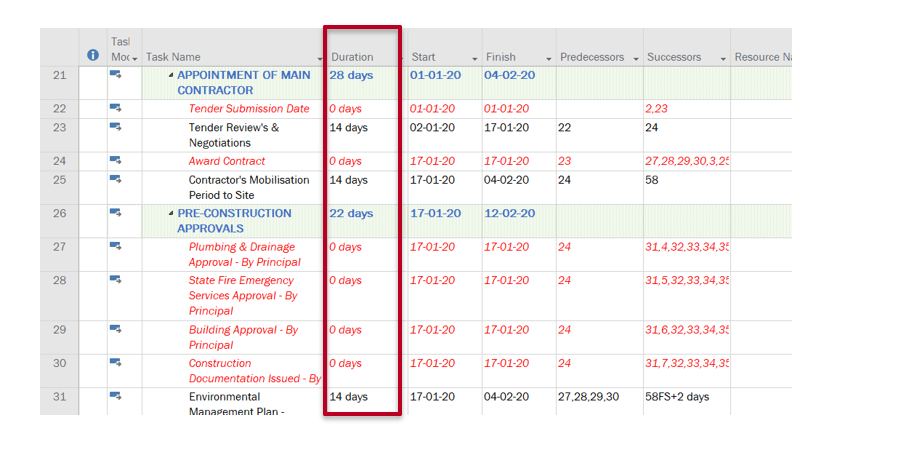
5. Dependency Logic (Predecessors & Successors)
Once the durations have been entered, enter the predecessors for the various tasks. Check the Gantt Chart for floating tasks i.e. tasks without predecessors’ successors. Floater tasks generally come from tasks with Start-to-Start and Finish-to-Finish dependency logic.
There should be only one task without a predecessor, which signifies the start of the project. The summary tasks do not have predecessors and successors. The reporting milestones to the top of the programme should not have any successors. You will need to run a filter to search for the tasks without predecessors and successors to ensure you have entered the logic in the right places.
You should look if the logic makes sense. A programme can be linked but not in the best build order. You need to look for the driving predecessors, which dictate the completion of the successor tasks. Asta Powerproject has a feature that allows you to search for predecessors and successors and linked them easily. Also, Asta Powerproject has a Quality Check tool, which helps you to identify tasks with logic errors.
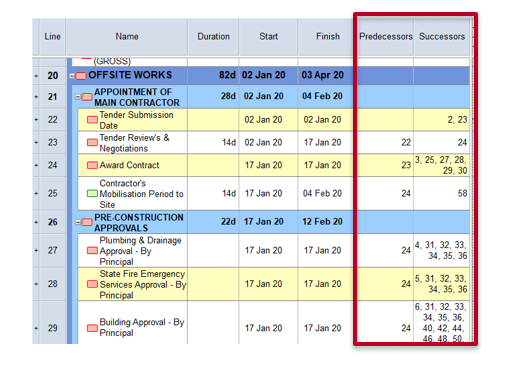
6. Critical Path(s)
Ensure your critical path shows up. You should look for the near-critical path(s) as well. You can tell the software to register tasks with less than x days as critical. You should look at the total float. If there is a negative float, you need to review the duration of tasks and the logic used to link them.
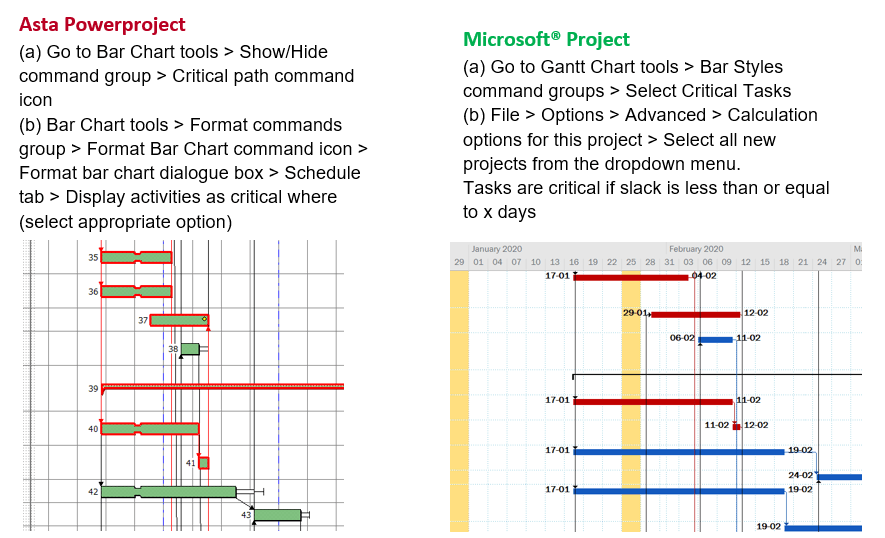
7. Timescales
Organise the timescales on the Gantt Charts for your viewing preferences. This ensures you can present the programme easily to other users.
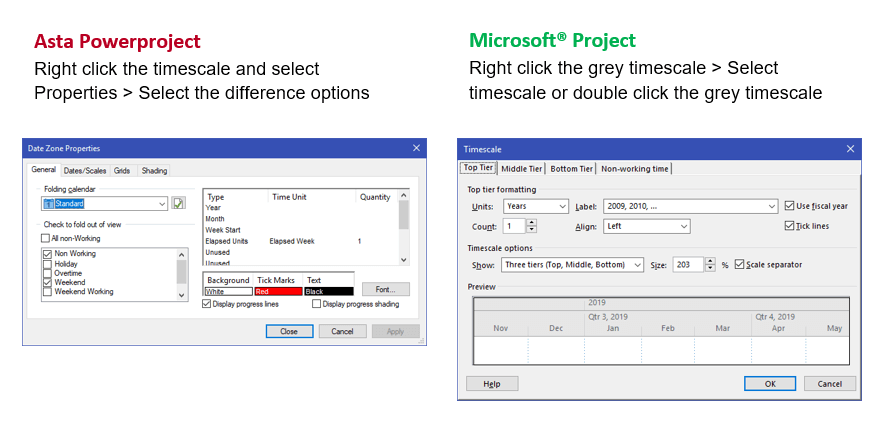
8. Formatting
You need to include an honest representation of the programme, such as proper labels / headings / guidance notes and assumptions using the notes features of the program (MSP, Acrobat Reader, Acrobat Professional, Foxit, Bluebeam etc). Ensure that you have proper file names and version controls. You should adjust the titles of the programmes when you are updating the programme.
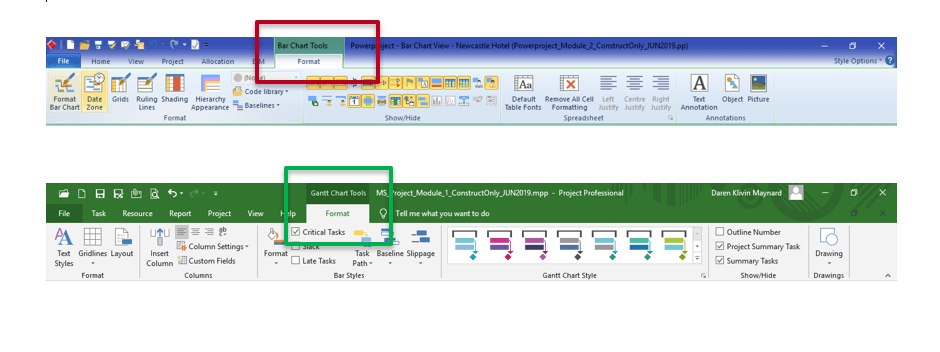
Solid Support Training & PMO Services
We provide training in planning software & construction planning, specifically for people working in the construction industry. Our courses are created and delivered by our team of experienced construction planning consultants, who have trained thousands of construction industry professionals. Our Project Management Office (PMO) services help our clients to take control of project management practices.
About the writer





